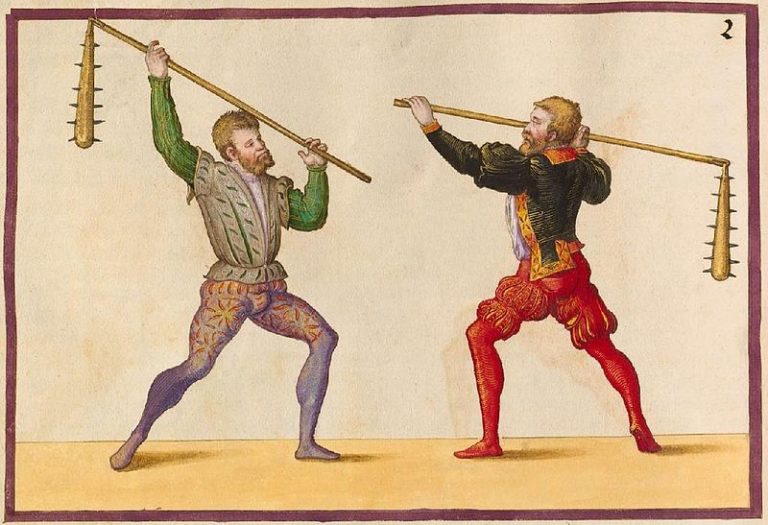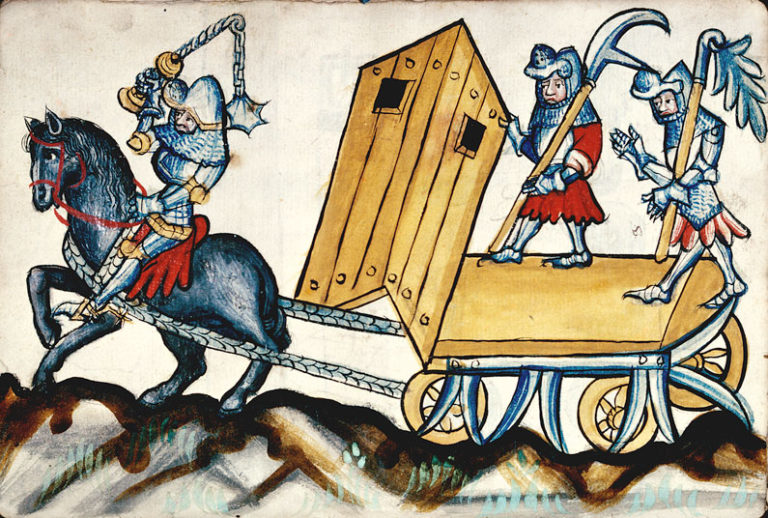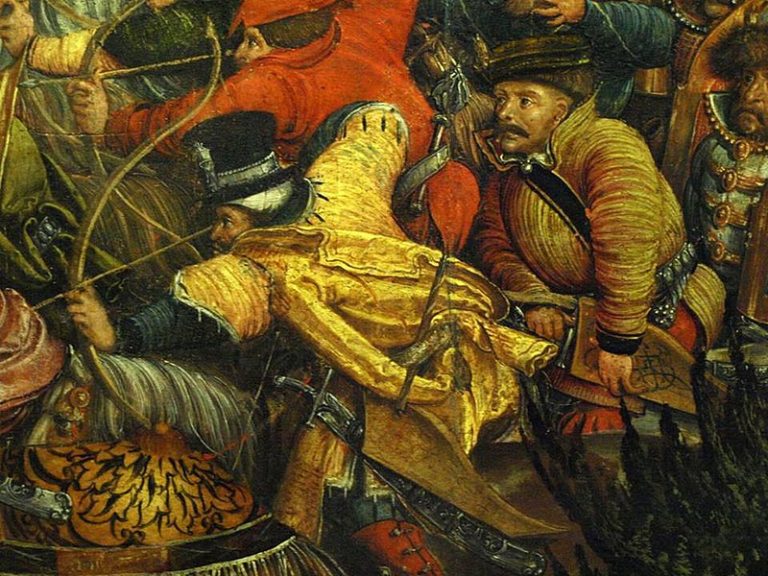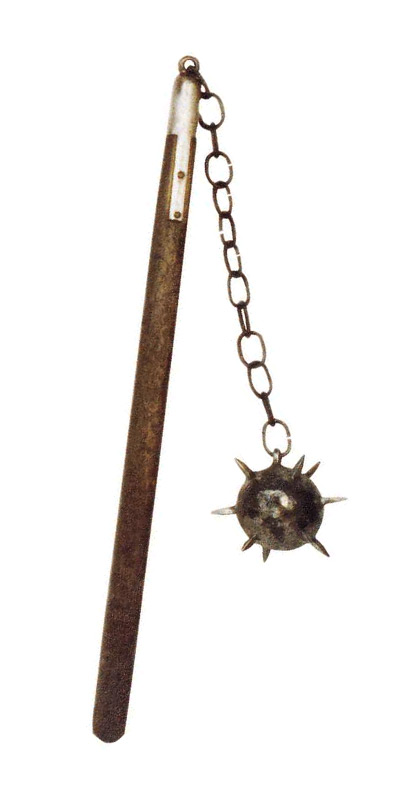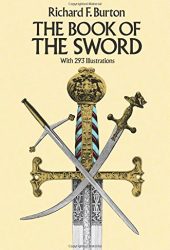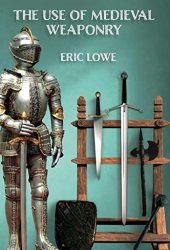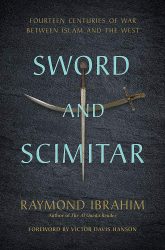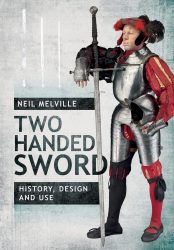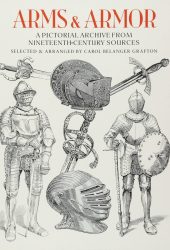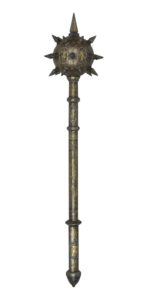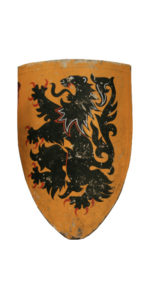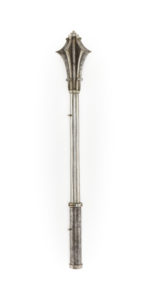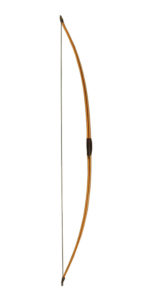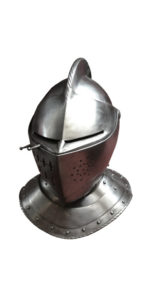The flail (sometimes called Morning Star Flail) is a weapon that consists of a striking head attached to a handle by a rope or chain.
The main advantage of a medieval flail is its ability to strike around a defender’s shield or parry. However, the flail was a difficult weapon to master and it lacked precision.
There are two main types of flails. The first is an infantry weapon with a round metal head for striking. This weapon derives from the agricultural tool that carries the same name, which was used mostly in threshing. There is also a smaller, more spherical-headed flail that appears occasionally on 15th century art.
European Medieval flails and maces were initially designed to be rounded – to prevent the spilling of blood. These ‘bloodless’ weapons were popular among the most religious Christian warriors.
Types of Medieval Flails
The Peasant Flail
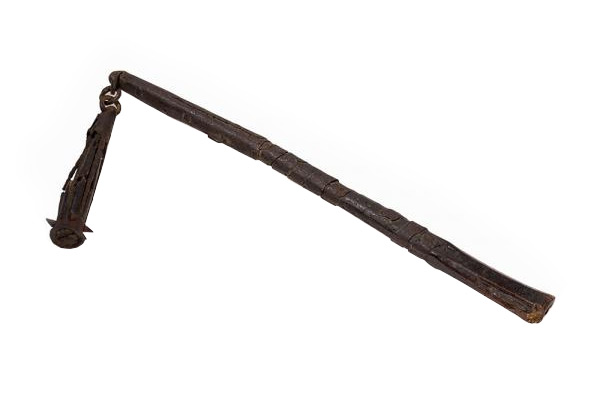
This type of flail appears in the Late Middle Ages. It’s a very long shaft with a cylindrical striking end. These were initially two-handed agricultural flails used sometimes as weapons by peasant armies conscripted into military service. Some of them featured studs or spikes embedded in the striking end. Peasant flails usually appeared in popular uprisings but were also used by armoured knights. Several German martial arts manuals or Fechtbücher from the 15th, 16th and 17th centuries show illustrations of peasant flails and how to use them.
The Ball and Chain Flail
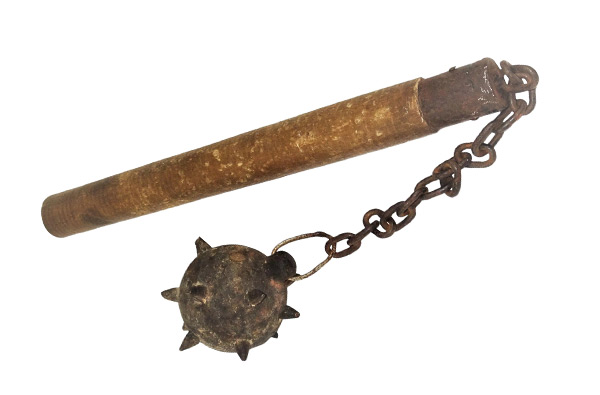
This type of flail is a shorter weapon consisting of a wooden shaft connected to one or more spherical striking ends through a chain, rope, or leather. The shaft is usually 1 to 4 feet long and the shape of the head can vary in shape. Some flails are spherical, rounded, or cylindrical, and can be covered in spikes. The length of the chain could also vary from a few inches to several feet. It’s sometimes also referred to as “military flail” or “chain mace” and frequently confused with the Morning Star (which is actually a rigid weapon). To differentiate this type, historians have called it kettenmorgenstern.
Similar Weapons
The Morning Star
The Morning Star is a club-like weapon consisting of a shaft with an attached ball adorned with spikes. This medieval weapon combines blunt-force and puncture attacks.
The Goedendag
The goedendag was a Flemish weapon used by the infantry. It consists of a thick wooden shaft between 1.2 and 1.8 meters long (3.9 to 5.9 ft) and slightly thicker towards the top. The goedendag is topped with a stout iron spike.
Using Flails
Even though the flail was effective against shields, it was a difficult weapon to master. It lacked precision and was tricky to use in close combat or closed rank formations. Despite multiple games and movies depicting the flail as a “quintessential medieval weapon”, there is little historical information to support its popularity. And because many pieces found in museums turned out to be forgeries, many believe these weapons didn’t actually exist!
There is, however, a version of the long-handed peasant flail in the Paulus Hector Mair’s combat manual Arte De Athletica which shows techniques for using this weapon. Many examples of non-spiked flails known as kisten have been found in the 10th century in the territories of the Rus. These were probably adopted from either the Avars or Khazars.
In any case, flails were relatively rare weapons and never saw widespread use. The main reason is that they pose a particular danger to its wielder; a missed swing could retain momentum and strike the user’s body. It could also throw the fighter off balance.
